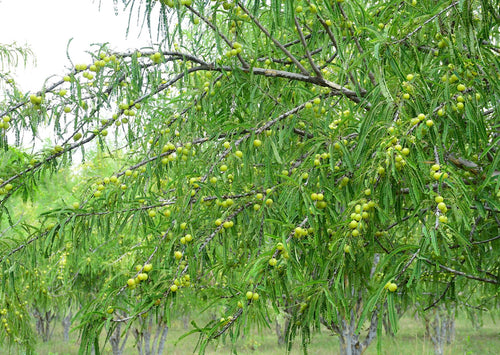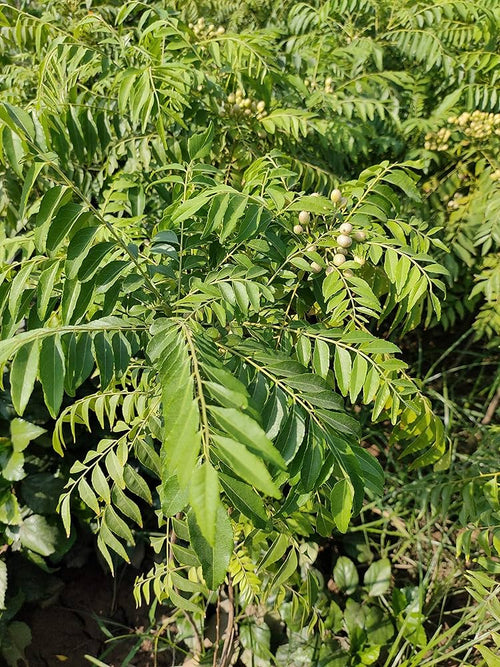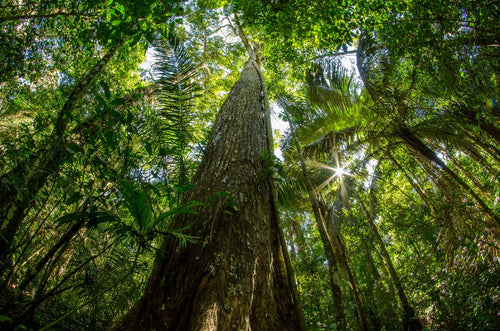Trees for Shree Ram Katha by Ram Parivar
Ram Parivar organized a program in Thane to narrate the illustrious tale of Shri Ram. The Deputy Chief Minister of Maharashtra, Shri Devendra Fadnavis Read more
Project Update 2

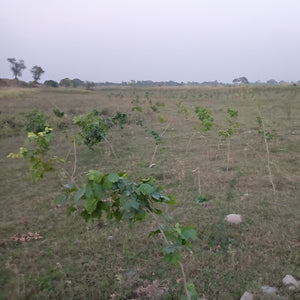

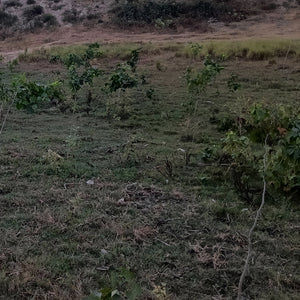
Project Update 1





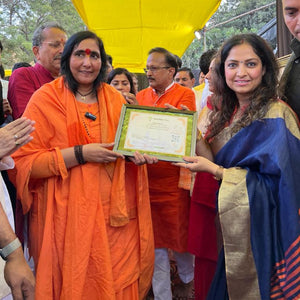
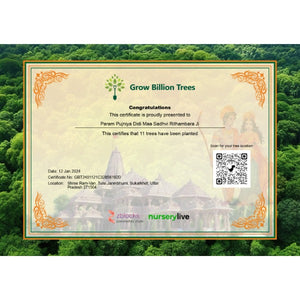

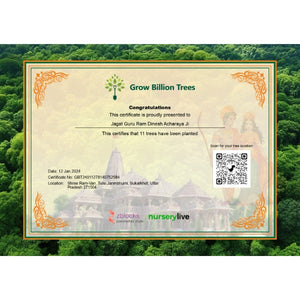
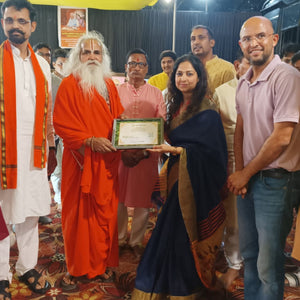
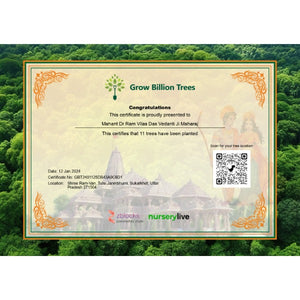

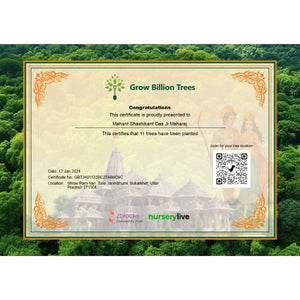

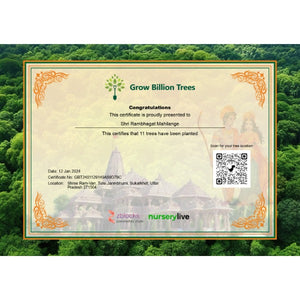

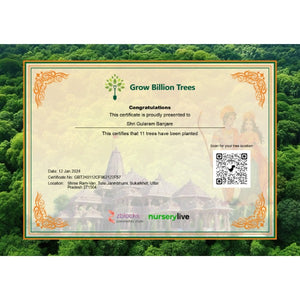

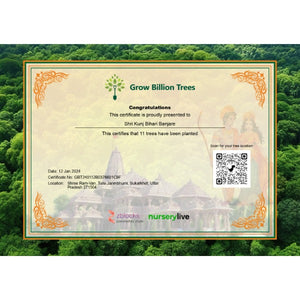
Digital Forest
Forest with 358 Trees planned
Want to plant your tree now?
Plant a Tree @ 299Trees for Shree Ram Katha by Ram Parivar
Ram Parivar organized a program in Thane to narrate the illustrious tale of Shri Ram. The Deputy Chief Minister of Maharashtra, Shri Devendra Fadnavis, graced the occasion as the chief guest. The revered presence of Guru Ram Dineshacharya Ji Maharaj, Mahant Shashikant Das Maharaj Ji, Union Minister Kapil Patil Ji, Shweta Shalini Ji, and a multitude of devoted audience and followers of Shri Ram added to the spiritual ambiance.
As part of the environmental initiative, Grow Billion Trees launched a tree plantation campaign along the Shri Ram Trail in Ayodhya.
In a symbolic gesture, tree certificates were bestowed upon all the distinguished guests, commemorating their contribution to this noble cause.
The philanthropic efforts of PB Charitable Trust Raipur and the Nandan Family were evident as they generously presented tree certificates to every member of the Ram Parivar, further solidifying the commitment to a greener and sustainable future.
Tree Plantation Date
12th February 2024
Tree Plantation Location
Tulsi janmbhumi, rajapur sukarkhet, vikas khand paraspur, tahsil karnailganj, Gonda, Uttar Pradesh 271504
Trees Planted
Total Trees Planted: 358
Species Planted: Peepal, Neem, Bamboo, Jamun, Mango, Mahogany, Sheesham, Amla, Ashoka, Kachnar, Jungle Jalebi
Forest Type: Community Forest
A community forest is a collectively managed woodland that is maintained and nurtured by a local community to address both environmental and social needs. These forests are designed to enhance biodiversity, combat soil erosion, improve water retention, and support local wildlife. Beyond their environmental benefits, community forests also serve as valuable resources for communities by providing timber, non-timber forest products, and medicinal plants, while also contributing to the livelihood of community members.
Advantages of Community Forest
Biodiversity and Ecological Balance
The community forest established by Grow Billion Trees at Gonda, Ayodhya, introduces a variety of native tree species that enhance biodiversity and restore ecological balance. This diverse habitat supports numerous plant and animal species, creating a thriving ecosystem that enriches the region’s ecological health.
Soil Health and Agriculture Support
With robust tree roots preventing soil erosion, retaining moisture, and naturally enriching soil nutrients, this community forest contributes to better agricultural conditions for surrounding lands. Healthier soil leads to more sustainable agricultural productivity, benefiting local farmers and supporting food security.
Water Conservation
The forest functions as a natural reservoir by capturing and storing rainfall, which helps in groundwater replenishment. This is a critical benefit in regions with water scarcity, ensuring more sustainable water resources for nearby communities.
Carbon Sequestration and Air Quality
As the trees mature, they sequester carbon dioxide, reducing greenhouse gas levels and contributing to cleaner, healthier air for the local population. This forest serves as an essential carbon sink, supporting global climate goals while improving local air quality.
Community Livelihood and Economic Opportunities
The forest offers various non-timber products, including fruits, nuts, and medicinal plants, creating sustainable income sources for local families. This helps support economic stability and encourages community participation in forest conservation efforts.
Environmental Education and Community Engagement
The initiative involves the local community in maintaining and managing the forest, instilling a strong sense of ownership and responsibility. It also serves as an educational resource, especially for younger generations, raising awareness about environmental stewardship and the importance of sustainable practices.
Climate Resilience and Sustainable Land Use
This forest acts as a natural buffer against extreme weather, promoting regional climate resilience. By stabilizing the local ecosystem, it supports sustainable land use and helps protect the area from the adverse impacts of climate change.
Through these interconnected benefits, the community forest at Gonda, Ayodhya, goes beyond reforestation. It is a sustainable, community-centered initiative that brings long-term environmental, economic, and educational advantages to the region, securing a resilient future for generations to come.
Commitment by Grow Billion Trees
Grow Billion Trees is committed to driving sustainable plantation efforts, ensuring every initiative aligns with key environmental objectives and promotes long-term ecological balance. They focus on selecting native tree species that are well-adapted to local ecosystems, ensuring a higher survival rate and stronger environmental impact.
To maintain plant health and longevity, Grow Billion Trees emphasizes continuous maintenance and regular monitoring of the plantations. This approach helps ensure that each tree thrives, contributing effectively to both biodiversity and climate resilience.
Transparency is a core principle in their operations. Clients receive comprehensive reports, including geo-tagging of planted trees, survival rate updates, and ongoing progress reports. This level of openness allows clients to track the direct impact of their contributions, reinforcing trust and accountability.
Through their dedication to sustainable practices, Grow Billion Trees ensures that every plantation project leaves a lasting positive footprint on both the environment and the local communities it serves.
Summary
Grow Billion Trees developed a community forest, transforming barren land into a flourishing green space that benefits both the environment and the local community. This initiative integrates diverse native tree species to support biodiversity, enhance soil fertility, and improve water retention. By involving residents, the project fosters a sense of shared ownership, engaging the community in sustainable land stewardship. The forest serves as a communal resource, providing shade, natural beauty, and potential income through sustainable harvesting. Grow Billion Trees is creating a lasting, positive environmental impact while promoting community well-being.
Trees for Corporates
Trending
Most Popular
1. Tree Plantation Benefits
Planting trees is like pressing nature’s ‘refresh’ button. From cleaner air to cooler cities, the benefits of tree plantation are endless. Trees absorb pollutants, provide oxygen, and help balance ecosystems. Plus, they’re crucial in fighting climate change by capturing carbon dioxide and regulating temperature. Tree planting also improves soil quality, boosts biodiversity, and supports local wildlife. Beyond environmental benefits, trees offer social perks too – imagine shaded parks, scenic landscapes, and calm, green spaces for all to enjoy. Grow Billion Trees understands this and is committed to bringing these green assets back into communities, one tree at a time.
2. Community Forest Development
Community forests are a fantastic way for locals to play a hands-on role in creating sustainable green spaces. When a community forest is established, it turns a once-barren area into a vibrant green hub that everyone can enjoy. Grow Billion Trees aims to unite communities in planting, nurturing, and preserving these forests. This isn’t just about trees; it’s about creating connections, improving local ecology, and promoting shared responsibility. Community forests boost local resilience by providing natural resources, helping manage water, and improving biodiversity. It’s a win-win for nature and communities alike!
3. Agroforestry Advantages
Agroforestry is where trees and agriculture join forces! This innovative approach combines tree planting with crops and livestock, promoting biodiversity and reducing environmental impact. Grow Billion Trees champions agroforestry, as it benefits farmers and the environment. Trees improve soil quality, reduce erosion, and offer shade, which enhances crop yield and farm sustainability. Agroforestry systems also support wildlife and help with carbon sequestration. It’s not just farming – it’s farming with nature, adding layers of benefits for both ecosystems and farmers’ livelihoods.
4. Carbon Sequestration through Trees
just one mature tree can absorb over 20 kilograms of carbon dioxide per year! Imagine the impact of thousands of trees working together in a community forest.
5. Native Species Planting
Planting native tree species isn’t just eco-friendly; it’s eco-smart! Native trees are adapted to the local climate and soil, which means they require less water and maintenance. They support local wildlife, from birds to insects, creating a self-sustaining ecosystem. Grow Billion Trees prioritizes native species to boost biodiversity and ensure each forest is a harmonious part of the local environment. Native trees also help preserve the area’s natural heritage and prevent the spread of invasive species, making them a perfect choice for sustainable reforestation.
6. Environmental Education and Awareness
Tree planting isn’t only about digging holes; it’s about digging into knowledge too! Educating communities on the importance of trees and sustainable practices is a core part of Grow Billion Trees’ mission. Environmental education fosters a sense of responsibility and encourages sustainable behavior. With fun workshops, community events, and hands-on experiences, people of all ages learn how trees help ecosystems, tackle climate change, and benefit daily life. Engaging people in nature creates a lasting impact, as they’re more likely to protect and preserve green spaces for future generations.
7. Reforestation and Land Restoration
Turning barren lands green is Grow Billion Trees’ passion! Reforestation restores degraded lands, bringing life back to ecosystems that were once stripped of vegetation. When trees return to an area, they improve soil health, prevent erosion, and support wildlife. This process revives biodiversity, enhances water retention, and improves air quality, making it essential for environmental health. Reforestation projects also provide shade and shelter for communities, boost local economies, and help fight climate change by sequestering carbon. Land restoration, with trees at its heart, transforms landscapes and lives.
8. Climate Change Mitigation
Fighting climate change needs all hands on deck, and trees are an excellent ally in this battle. By planting and protecting forests, Grow Billion Trees actively contributes to climate change mitigation. Trees absorb CO₂, stabilize soil, and even cool surrounding areas, reducing urban heat islands. A community forest or agroforest absorbs carbon, provides oxygen, and acts as a buffer against extreme weather. It’s a proactive way to lessen climate impact, demonstrating that even small actions – like planting a single tree – can have big environmental effects over time.
FAQ
What is the goal of Grow Billion Trees’ tree plantation initiatives?
Grow Billion Trees aims to increase green cover by planting trees and creating sustainable community forests. Our mission is to restore degraded land, improve biodiversity, and enhance the environmental resilience of rural and urban areas alike. By working with local communities, we promote tree plantation to create healthier, greener landscapes, reduce carbon emissions, and help fight climate change. Each project is tailored to improve the ecological balance and support the communities by providing additional income sources, cleaner air, and improved soil health.
How does a community forest benefit the local community?
Community forests are designed to offer numerous benefits to local residents. They create green spaces where people can connect with nature, while also providing resources like fruits, timber, and shade. These forests improve air quality, reduce soil erosion, and help with water conservation. Grow Billion Trees works closely with communities to educate and involve them in forest care, enhancing local biodiversity and fostering a sense of ownership and pride. Additionally, community forests can boost local economies by generating employment and opportunities for eco-tourism.
Why is agroforestry important for sustainable agriculture?
Agroforestry integrates trees with crops and livestock, creating a sustainable agricultural model. This approach reduces soil degradation, improves soil fertility, and encourages biodiversity. At Grow Billion Trees, we advocate agroforestry as it helps farmers by providing additional income sources from timber, fruits, and other non-timber products. The shade from trees enhances crop growth and resilience, while also helping to conserve water. Agroforestry also plays a significant role in carbon sequestration, contributing to climate change mitigation efforts.
What types of trees are planted by Grow Billion Trees?
We prioritize planting native tree species that are adapted to the local climate and ecosystems. Native trees provide better habitats for local wildlife, require less water, and have natural resistance to local pests. By choosing native species, Grow Billion Trees ensures that each planting project supports regional biodiversity and strengthens ecosystems. Our selection process considers the specific benefits each species offers, such as carbon sequestration, soil improvement, and resource provision for communities, ensuring a sustainable and resilient forest.
How does Grow Billion Trees ensure the survival of planted trees?
We employ a range of techniques to ensure high survival rates for our trees, including regular monitoring, proper planting techniques, and community involvement in care and maintenance. Grow Billion Trees conducts training workshops to educate locals on tree care, and we provide aftercare support for at least three years after planting. This hands-on approach builds a sense of ownership within the community, contributing to a higher survival rate. Additionally, we use geo-tagging for transparency and to track the progress of every plantation.
What are the environmental benefits of planting trees?
Trees provide numerous environmental benefits, including air purification, carbon sequestration, and soil stabilization. At Grow Billion Trees, our projects are designed to enhance biodiversity by creating habitats for various species and improving soil health through natural nutrient cycling. Trees also help regulate local climate by providing shade, reducing the urban heat island effect, and preventing soil erosion. Through our planting initiatives, we aim to create a greener, healthier environment that supports wildlife and contributes to a more sustainable future.
How do Grow Billion Trees’ projects contribute to climate change mitigation?
Our tree plantation projects play a vital role in reducing carbon dioxide levels by sequestering carbon and improving air quality. Trees absorb carbon, which helps offset greenhouse gas emissions. Grow Billion Trees also focuses on educating communities on the importance of sustainable land management practices, which reduces the need for deforestation and promotes long-term environmental health. By restoring forests and encouraging agroforestry, we’re helping communities adapt to and mitigate the impacts of climate change while creating greener landscapes.
What is a community forest, and how does it differ from traditional forests?
A community forest is a shared green space where local communities are involved in the planting, care, and use of the forest. Unlike traditional forests, community forests are created with the specific aim of benefiting the local community by providing resources like fruits, timber, and medicinal plants. Grow Billion Trees partners with communities to establish these forests on public or communal land, involving locals in every step. This model promotes sustainable use of natural resources, fostering a shared sense of responsibility and environmental stewardship.
How can individuals get involved in tree plantation projects with Grow Billion Trees?
Individuals can participate in a variety of ways, from volunteering in plantation events to sponsoring tree-planting initiatives. Grow Billion Trees offers both on-the-ground opportunities for local involvement and virtual options for those who want to contribute from afar. We organize plantation drives, community events, and awareness campaigns to engage people of all ages. Additionally, supporters can follow our progress and receive updates on plantation locations, tree growth, and overall environmental impact, making it easy for everyone to stay involved.
What are the social benefits of Grow Billion Trees’ agroforestry projects?
Agroforestry provides sustainable livelihoods for farmers by offering multiple sources of income from crops, timber, and non-timber products. Grow Billion Trees helps farmers adopt agroforestry techniques that improve their productivity and resilience to climate variability. This approach promotes rural development and reduces poverty, while also creating community green spaces that improve quality of life. Agroforestry projects build social cohesion by involving entire communities in sustainable practices, supporting local economies, and empowering communities to manage natural resources responsibly.
- Choosing a selection results in a full page refresh.
- Opens in a new window.



